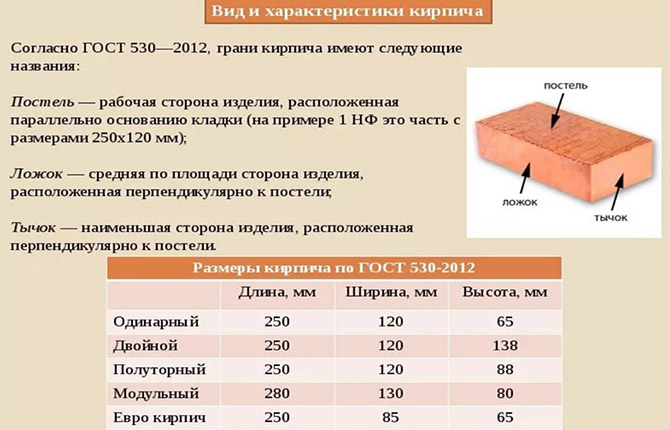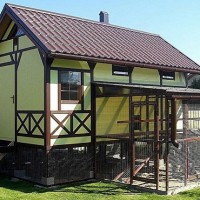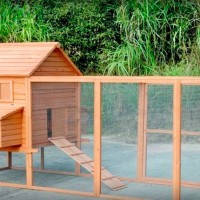What brick to use for building a bathhouse: types, composition, advantages and disadvantages
It has long been believed that the only suitable material for building a bathhouse is wood.Now everything is different, since a reliable structure with the necessary properties can be built from brick. This building material ensures that the bathhouse will last for many years. At the same time, it allows you to make the building attractive, organically fitting it into the design of the site. But which brick is better for a bathhouse?

Advantages of brick baths
The advantage of a brick bath is almost complete fire safety. The material belongs to the non-flammable group, so even with a significant increase in temperature it does not ignite and does not emit harmful substances into the atmosphere. At the same time, it maintains operational parameters in any conditions.
The next plus is environmental friendliness. Compared to materials with similar properties, brick seems to be one of the most natural and “clean”. After all, it is based on processed mineral raw materials. Clay is safe and of natural origin. But various compounds that are used to treat logs when forming a log house may contain harmful impurities.
Brick can be used to build almost any type of building, which distinguishes it from traditional wood. The user is able to build a bathhouse according to his own design in order to achieve maximum comfort and a pleasant appearance.
Separately, it is worth noting the increased service life of the bath. Traditional log buildings require regular maintenance and repairs. During shrinkage, cracks may appear in such structures in which moisture accumulates. All this leads to deformation and rotting. So in a wooden bathhouse it is often necessary to replace individual elements of the walls or foundation.
A brick bathhouse is much more durable and unpretentious. The average service life is from 50 to 100 years. Maintenance costs are reduced by about 2-3 times compared to a log house.
Healthy:
- DIY frame bathhouse
- Stove for Russian bath
- Ventilation in the bath
- How to pipe gas into a bathhouse from home
- Do-it-yourself sauna sewer
Which brick is suitable for building a bathhouse?
To figure out which brick is suitable for laying a bathhouse, it is worth remembering the specific features of the structure being built. In particular, the material must have increased resistance to humidity and temperature changes.

Optimal brick options for building a bathhouse:
- Full-bodied. A good solution, which, however, cannot be used in places with high temperatures. You won’t be able to create a stove or pipe with it.
- Fireclay. High-strength, fire-resistant brick, suitable for pipe and furnace laying. It will cost more.
- Hollow. Suitable for creating walls and partitions, but it should not be used for foundations.
- Red ceramic. A universal brick with increased fire resistance and moisture resistance.
Separately, it is customary to consider clinker bricks, which many call the most suitable solution for a bathhouse. It is resistant to high temperatures and moisture. It is based on only the highest quality clay. The characteristics of clinker are similar to natural rocks. Suitable even for laying out floors.
It is worth considering that not all manufacturers on the market supply high quality clinker.Experienced builders recommend avoiding products from Chinese or Polish companies.
If you decide to build a bathhouse using broken bricks, under no circumstances should it be placed in support areas or in corners, since this approach will reduce the reliability of the building.
It makes sense to save money by using hollow bricks when laying out walls, while the foundation and base are created from durable solid bricks. Due to this, it will be possible to reduce the load on the foundation, increasing its service life.
When choosing bricks for construction, take into account:
- Manufacturer and supplier. It is advisable to buy material in large stores, considering solutions from well-known and trusted brands.
- Condition of the brick. It should not be under-burnt (bright scarlet hue) or over-burnt (brown), as this will directly affect the strength properties.
- Construction budget. It is important to evaluate the possibilities in advance and select a brick with a suitable ratio of cost and quality.
- Brick size. The larger it is, the higher the cost of the material and the faster the masonry work is carried out.

Which composition to choose
When building a brick bathhouse, mortars are used to strengthen such buildings. It is recommended to add lime or hydrolime to the compositions, since these components increase the resistance of walls to moisture and provide high bonding strength.
If it is necessary to minimize or even prevent shrinkage, sand is replaced with sawdust.
Comfortable work in a humid environment is ensured by a hydraulic binder - Portland cement of the M100 and M50 brands.It can be combined with other insulating and moisture-repellent additives.
Solutions for the construction of a brick bath are considered within 2 large groups:
- air-hardening (air types of lime, clay, gypsum, etc.);
- for work in damp environments (hydrolime, Portland cement).
It is important to make the choice based on the specific conditions under which construction is planned. An incorrectly selected mixture can negate all the efforts of builders and the benefits of ready-made brick buildings.

The most logical option would be a building constructed using different bricks for the foundation and walls, since this approach involves a relatively low load on the foundation and reasonable financial costs.
Which brick for a bathhouse, in your opinion, is still the most optimal? Share in the comments. Bookmark the article so that useful information and tips are always at your fingertips.










I trust the construction of any such important projects, where everything and a lot needs to be taken into account at once, only to professional construction teams. I have skills in construction at the elementary school level, so specialists are my choice